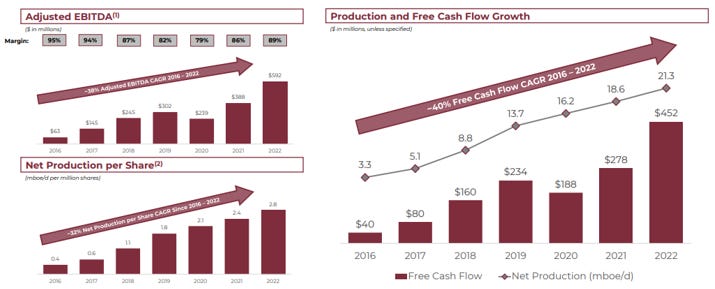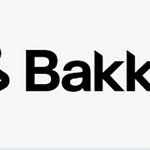Welcome to Episode 120 of Special Situation Investing.
Three months have passed since our last Portfolio Update, so it’s time for another.
We use these pieces to summarize updates from quarterly reports and earnings calls of some of the highest conviction companies in our portfolio. The goal is to record highlights from multiple companies in a succinct format that acts as a journal, capturing our thoughts on companies and their progress for future reflection. We hope you find these updates valuable. Take a second to let us know if you do by filling out the poll below. Or better yet, consider sharing this piece with a friend.
With that, let’s dive in the topics for this quarter.
Texas Pacific Land (TPL)
It’s been a while since we wrote about Texas Pacific Land Corporation. For our newer readers and listeners, TPL is the owner of 868,466 surface acres in the Texas Permian Basin. The $13 billion company’s revenues come from royalties energy producers pay to use its land and from its water business, where it provides and recycles water used in fracking. It’s a fantastic company with massive margins and an amazing asset portfolio. You can read all our previous pieces on the company for more details (link, link, link, link).
Our two last updates on TPL highlighted the on-going legal spat between the company’s management and two of its largest shareholders. The dispute arose when the large shareholders did not vote in lockstep with management in support of increasing the company’s authorized shares from roughly 8 million to 46.5 million. Our piece, TPL’s Governance Battle, goes into detail on the issue, but suffice it to say, the whole deal has been a dark cloud hanging over TPL for more than a year.
Since our last update, the legal proceedings concluded. Both the Delaware Court of Chancery and Supreme Court ruled in favor of TPL’s management. This means the company is clear to authorize up to 46.5 million shares. Since both hosts of this show dislike shareholder dilution, and we believe it’s challenging for managements to use shares in such a way that doesn’t result in dilution, this was not the outcome we wanted. But it’s the one we got.
With the ruling finalized, TPL announced a 3-for-1 stock split on March 7th. Owners of the stock will receive 2 additional shares for every one they own on March 18th. The new shares will be distributed March 26th. Given that there are currently 7,668,422 shares of TPL outstanding, after the split, there will be 23,005,266 shares outstanding.
This leaves an additional roughly 23 million shares authorized that management can determine how to use. Non-dilutive share splits are fine and can increase liquidity which could benefit a thinly traded stock such as TPL. If management chooses to use the remaining shares to fund non-value adding acquisitions or worse, to pay themselves, shareholders could see their ownership in the company significantly diluted.
In an apparent effort to ease the mind of concerned shareholders, during its latest earnings call on 22 February, TPL’s CEO waxed lyrical about the factors to consider when deciding how to allocate capital. Organic investments, buybacks, acquiring external assets, and dividends were all discussed but no ranking of priority was given. He did seem to suggest that TPL’s shares were not cheap and thus buybacks were not top of the list.
Even though the litigation didn’t conclude the way we hoped, we remain bullish on TPL’s long-term prospects.
Like Buffett reportedly said of Coca-Cola, we believe a ham sandwich could run TPL. (We aren’t implying that one currently does.) Regardless of the current uncertainty concerning authorized shares, TPL remains a simple, high quality company.
Check out the image below snagged from the company’s latest investor presentation. They show that since 2016 through 2022, the company’s adjusted EBITDA grew at a CAGR of 38%, net production per share grew at a CAGR of 32%, and free cashflow had a CAGR of 40%.
We are encouraged to see insiders buying of TPL shares lately. In addition to Murray Stahl, who buys TPL almost every day, two other directors have recently bought large amounts of TPL stock. In the last two weeks, Eric Oliver bought approximately $1 million worth of stock and Robert Roosa bought $500,000 worth. Both Stahl’s continued purchases, and Oliver’s recent purchases are particularly of note since both were among the party that just lost the court battle against the company. On a number of occasions, Murray Stahl said the litigation hasn’t broken the relationships between the opposed parties and they still agree on most everything…including TPL’s bullish prospects.
Natural Resource Partners (NRP)
Our thesis with NRP remains in tact. The company continues to pay off debt obligations, remaining laser-focused on the goal it set back in 2015—become debt free and free up cashflow for unit holders.
Total obligations—warrants, preferred equity and debt—which were $1.5 billion in 2015, are only about $270 million today.
This dramatic reduction is supported by robust cash flow, depicted in the chart below. The company produced record free cashflow in 2023 of $313 million. Yes, that’s $313 million from a $1.1 billion market cap company. We’ll let you do the math.
Depending on the price of coal, natural gas, soda ash, and the amount of production by its lessees going forward, NRP will be extremely close to its goal within the next eighteen months.
The company kicked off the new year by settling 462,165 warrants with $10 million in cash and 198,767 common units. This was the first time we’d seen the company issue units. Then on February 1st, the company announced an increase to its total aggregate commitment under the credit facility from $155 million to $185 million. At first, these two developments—dilution and more debt—could appear negative.
Our assumptions at the time were, first, the company didn’t have the cash on hand to settle all the warrants in cash (as had been its recent habit) and so it issued shares, and second, the increase to the credit facility was to avoid further dilution. The texts below show our thoughts in real time.
On March 7th, during the company’s latest earnings call, NRP’s CEO, confirmed our suspicions by stating:
There are two factors we consider when deciding whether to settle warrants with cash or common units: First, do we have ample liquidity, which we define quite conservatively, I might add; and second, is the market value of the common units less than our estimate of intrinsic value? If the answer to both of those questions is yes, we settle with cash.
While we will not comment specifically directly on our view of intrinsic value, I will say that it was our inability to answer yes to the liquidity question that caused us to issue units to settle a portion of the warrant exercises early this year. We continue to add additional bank revolver capacity that will provide financial flexibility to settle warrants with cash and accelerate redemptions of preferreds.
As an infection point for NRP approaches, we remain confident in management’s competence and shareholder-centric focus. We’ll end this section of today’s piece with the CEO’s response to a question regarding how the company would allocate its cashflow today if it were debt free. He replied:
Well, right now, we are still a bit out from getting to that point where the obligations are completely paid down. You are right in what you summarized initially that at our current run rate that it's not too long before we get to the point where we're obligation free.
But I don't want to speculate now on what we would do in 1.5 years, 2 years from now if we had excess cash. I can tell you at this point in time, we don't see opportunities in the market.
If we were in that theoretical situation where we had excess cash today, there are not on the horizon overly attractive opportunities to deploy capital. That being said, I will point out that we are focused on the task at hand right now, and we're not out beating the bushes for places to deploy capital.
I think you can rest assured that we are going to be quite thoughtful about anything we do with respect to deploying capital in any manner other than distributing it out to unit holders.
Permian Basin Royalty Trust (PBT)
Another situation we’re following closely is Permian Basin Royalty Trust. The short-sightedness of the market is creating an opportunity for long-term investors. Within the next couple years, cashflow available to the Trust’s unit owners will likely explode.
The Trust is a pass-though vehicle for oil and gas royalties. Over the last few years, the operator on the Trust’s Waddell Ranch property invested massive capex to increase production. Because the Trust has a net profits/overriding royalty, it is responsible for covering a portion of the capex. As a result, it paid out $3 million toward CAPEX in 2019, $10 million in 2020, $66 million in 2021, $124 million in 2022, and finally $120 million in 2023. This investment increased royalties from the Waddell Ranch six times, up from $39 million to $251 million.
We believe at some point the operator will decrease CAPEX and milk the rewards of its years of investment. This will free up a massive amount of cashflow for Trust unit owners. For a deeper dive into the situation, check out our previous piece.
Over the last year, the Trust’s shares traded down 50%. Since we wrote our piece on the Trust in September, the shares are down about 33%. So a situation we thought was good back then appears even better now.
Timing remains the question. Over the last month, the Trust released both its 2023 10K and a 8K that gave insight into what to expect in 2024.
On Thursday, February 29th, PBT released its 10K. We were hoping to get insight into what the operator (Blackbeard) expected for its 2024 capex budget. Any hint at a decrease in capex would be great news. The filing reported:
Blackbeard [the operator] has advised the Trustee that the proposed budget for 2024 has not been finalized; however, it has provided the Trustee with a preliminary capital expenditure budget of approximately $301 million (gross).
At first our assumption was that the Trust’s portion of the budget would be approximately 75% of the gross, about $225 million, almost double the amount it paid in 2023.
We were incorrect.
Perhaps it was a similar misunderstanding that led other investors to dump the stock the following Monday causing the stock to crash 17%. That day we were buyers, not sellers.
On March 18th, the Trust released its 8K announcing April’s cash distribution. The filing revealed more details concerning the planned capes budget. Here’s what it said:
Blackbeard has advised the Trustee that the proposed budget for 2024 has not been finalized; however, it has provided the Trustee with a preliminary capital expenditure budget of approximately $301 million (gross) $106.11 million (net) and development plan reflecting that the 2024 budget will include amounts to be spent on 83 (gross) horizontal wells and 12 (gross) vertical wells along with 24 (gross) recompleted well prospects to be worked over and completed as well as infrastructure and plugging and abandonment costs. Blackbeard has advised the trustee that approximately 7% of that preliminary budget has been incurred related to January 2024 activity.
So the “net” amount of $106 million is the portion for which the Trust is responsible. This is a decrease of about $15 million from what it paid out in 2023. It appears that Blackbeard expects a decrease in capex of about 10%.
Interestingly, the stock has recovered above were it was prior to its flash crash.
So, in conclusion, although it appears 2024 will not contain the massive decrease in capex we hoped for, the thesis remains in tact. The catalyst has moved to the right but still well within sight of long-term investors such as ourselves.
Honorable Mention: Garrett Motion (GTX)
Before we close this piece we want to quickly mention another position that made significant progress in the last quarter.
Garrett Motion is a turbocharger manufacturer we bought as a special situation back when it was restructuring and going through bankruptcy in 2020. Today, the company is close to having a clean capital structure and is highly profitable. In 2023, the company posted cashflow of $422 million, and in the fourth quarter alone the company produced $135 million of free cashflow, on a $2.3 billion market cap. The company also announced a $350 million stock buyback, at the time a 15% of the market cap. The stock price is testing a level just below $10. Once the major players that got involved during the bankruptcy slow their profit taking (aka selling), the price has a good chance of breaking out above the resistance.
Conclusion
With that, we’ve wrapped up another episode of the show. Thanks for continuing to support our work with shares, likes, and comments. We keep learning from you, our audience, and have found your inputs very valuable. It makes the work we do in putting these pieces out there highly profitable. Thank you. We’ll see you all in two weeks with another episode.





















Share this post